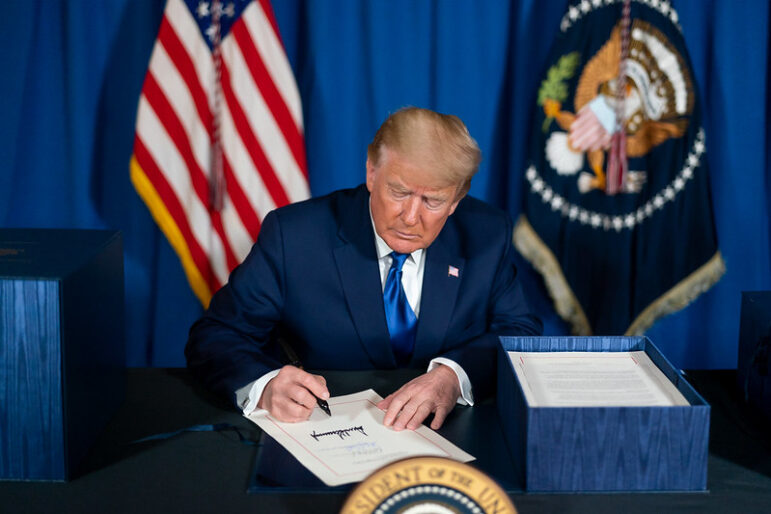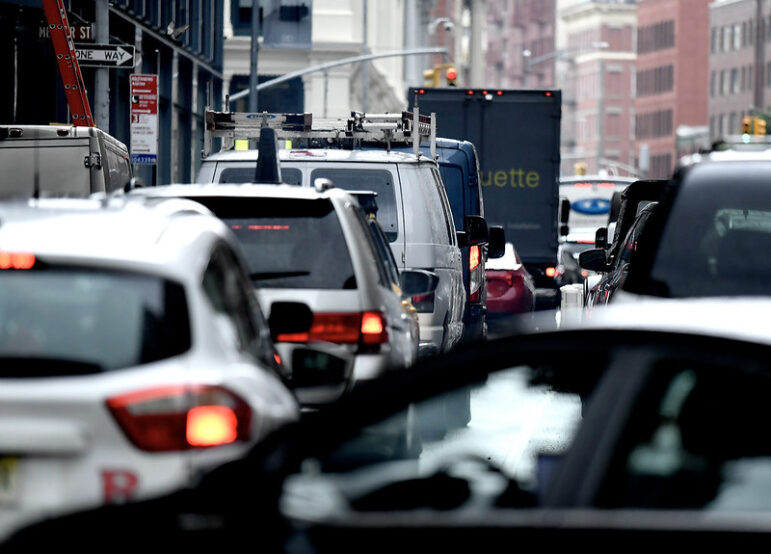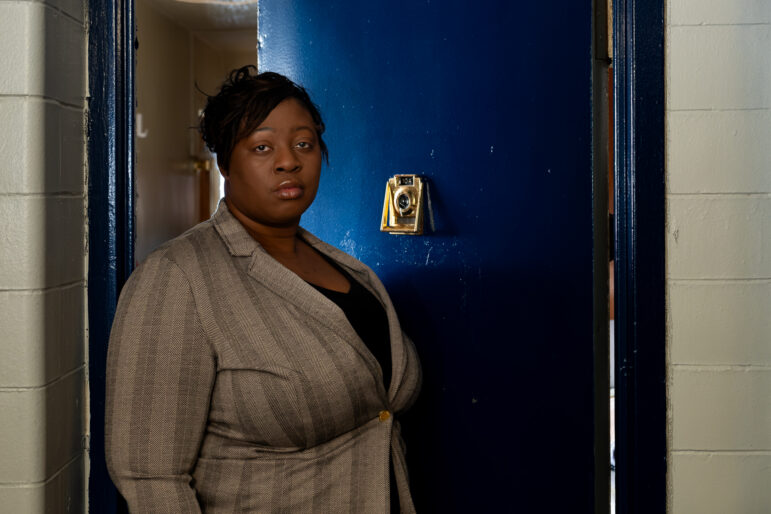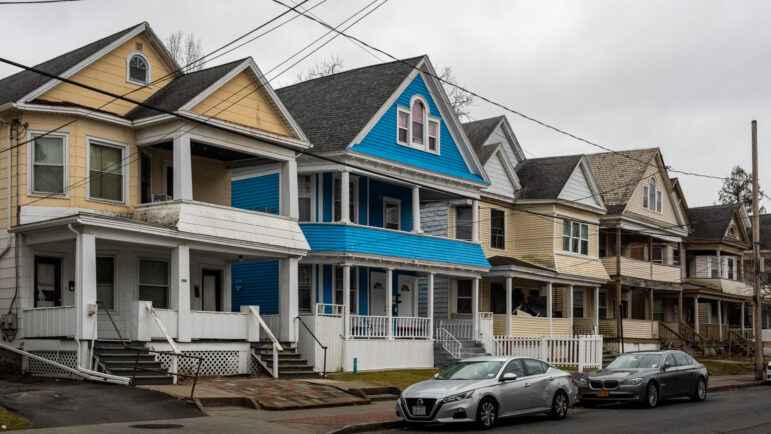
Adi Talwar
Disabled artists even faced barriers when they do get work. Ryan Haddad, an actor with cerebral palsy, aims to shred the stereotypical depiction of the disabled as delicate and virginal.
On a Friday afternoon in September, Jessy Yates, dressed like young Shirley Temple, maneuvered a wheelchair into a CUNY Graduate Center performance space and hosted a tea party — though cerebral palsy, a neurological condition that affects muscle coordination and gait, complicated her table-setting routine.
As dramatic music intensified, Yates, 23, crossed the room several times to retrieve items like utensils, which she scattered across the floor, and cups of hot water, which she covered with a saucer to mitigate the sloshing. The crowd applauded when she finished setting the table. But the tone of the performance abruptly changed when Yates stripped her childish outfit to reveal lingerie and floral nipple pasties.
That jarring transition from determined child to brash burlesque performer highlights the desexualizing and infantilizing of people with disabilities and presents such prejudices using humor and absurdism, Yates says.
The performance art piece, titled “You’re Going to Hell If You Laugh,” enables able-bodied audiences to consider the experience of their disabled peers, Yates adds. It is an important consideration because, though they comprise at least 10 percent of New York City’s population and transcend race, age and gender identity, artists with disabilities say they often feel overlooked or ignored.
“Disability is left out of conversations about diversity,” says Yates, who helped organize artists with disabilities as part of the de Blasio administration’s CreateNYC cultural plan process. CreateNYC promotes equity and inclusion in the New York City art scene by uplifting artists and arts organizations from traditionally marginalized groups. “If we don’t force our way into the conversation, no one is going to change their behaviors.”
Artists with disabilities say new language by the city—like frequent references to artists with disabilities in the CreateNYC plan—is a welcome gesture of inclusion, but they add that the city must build on that acknowledgement by deliberately funding artists with disabilities, holding art spaces accountable for the inclusion and paying for accessibility measures, especially at smaller art spaces.
Barriers, physical and intangible
For Yates, physical impediments to performance were secondary to the invisible obstacles subtly erected by influential adults, like the theater director in her “white and normie” Ohio hometown who advised her to consider other positions in theater because her disability would prevent her from landing acting jobs.
“I was trying to minimize my disability as much as possible,” Yates says. “I was so uncomfortable taking up space in my body.”
At New York University, Yates pursued directing and took a class that forced her to create and perform in her own work. The class, along with a meeting at a coffee shop with disabled artist Gregg Mozgala, enabled Yates to overcome the bias she had absorbed.
“I walked to get my coffee and walked back and when I sat down Gregg said, ‘That was the most theatrically engaging thing I’ve ever seen. All eyes were on you,'” Yates said. “That helped me realize the power disability brings to theater.”
Like Yates, Ryan Haddad, another actor with cerebral palsy, aims to shred the stereotypical depiction of the disabled as delicate and virginal. In his one-man show “Hi, Are You Single?” Haddad candidly discusses dating, sex and identity, like the time he entered a gay club for the first time and immediately faced an imposing staircase.
“Society sees us as fragile and innocent, very benevolent and pure people, but we have the same desires as everyone else,” Haddad says. “I am sexy and I am disabled and you’re going to have to reconcile that those things are not counterintuitive.”
Growing up, he often played the role of elderly characters because he uses a walker, he says, adding that he developed the solo show because few roles seemed available to people with disabilities.
“I have a career because I created a vehicle to showcase myself, my pathos, my comedy and everything I could bring to a role,” he says. “I wanted to say, ‘I don’t need someone else to write me this material. I can do this myself and show what I’m capable of so that you’ll see my work.'”
Absent from the diversity discussions
For people with disabilities, what able-bodied peers often take for granted—a step up to a doorway, a presentation without captioning, a pamphlet that is not read aloud—can have a massive effect on participation.
During the community engagement phase of the CreateNYC project, Christine Bruno, an actor, director and disability advocate at the Alliance for Inclusion in the Arts, assumed an important administrative role by ensuring that materials and venues served all New Yorkers. She also demanded that city materials feature specific language inclusive of people with disabilities. (This story uses both “disabled artists” and “artists with disabilities” interchangeably. While the CreateNYC plan frequently references “people with disabilities,” several of the artists interviewed for this story said they prefer the term “disabled person” or “disabled artist”).
As DCLA planned its “Office Hours with the Commissioner ” for disabled artists —DCLA hosted a series of events that enabled individuals of various backgrounds to share their concerns and recommendations with Commissioner Tom Finkelpearl during the CreateNYC planning process, including days reserved for specific marginalized groups—Bruno says she encouraged DCLA to find a more accessible location than the Chambers Street headquarters because it lacked appropriate accessibility.
In response, DCLA moved their office hours to the New York Historical Society, a more accessible venue on the Upper West Side that attracted roughly 100 people with disabilities, Bruno says.
“We have a saying, ‘Nothing without us,'” Bruno says. “Because often these conversations about disability happen without us — let alone conversations that are about the larger picture of diversity.”
In an email, a DCLA spokesperson acknowledged that discussions about diversity too often exclude people with disabilities and noted that cultural organizations have compiled little data about artists with disabilities—an issue specifically documented in April by the Disability/Arts/NYC Task Force (DANT), a watchdog organization to ensure that the city considered disabled artists in its plan.
In a separate statement, Cultural Affairs Commissioner Tom Finkelpearl said, “Too often, conversations about disability, not to mention those who take on disability as an identity, are left out of the larger discussion of diversity. CreateNYC tries to address the needs of the disability community both specifically and as a part of larger diversity, equity, and inclusion goals.”
“Full, meaningful inclusion for people with disabilities in the cultural sector goes beyond providing accommodations for audience members and visitors. It means engaging those with disabilities as cultural producers and curators, artists, funders, board members, thought leaders, and employees at all levels including leadership,” Finkelpearl continued. “The employment piece is critical. In my experience, when an organization has a diverse staff, diverse programming and audiences usually follow.”
When the city released CreateNYC this past summer, the Department of Cultural Affairs (DCLA) announced the immediate release of $2.2 million to make artspaces more physically accessible, to employ more individuals with disabilities as cultural workers and to specifically fund disabled artists and organizations representing artists with disabilities.
CreateNYC also specifically recommends funding access-related services such as ASL interpretation, captioning and audio description for artists and audience members. The plan also commits to ensuring that individuals with disabilities participate in DCLA and regrant panels, the selection process by which funding is often allocated and an issue Bruno says she and advocates pushed for.
The shared experience of exclusion
Artists with disabilities say they also face biases related to the perception of disability art—which refers to creative work that explores the impact and experience of disability. Too often their work is perceived as merely a therapeutic endeavor or as part of lesser genre that does not receive rigorous criticism.
“Disability is a generator of artistic brilliance,” Gotkin says. “There is a vibrant culture based on the rights movement and the shared experience of exclusion. People don’t realize how deep and important the culture of disability is.”
Gotkin says people with disabilities are often separated by specific impairment and thus less likely to organize. DANT, he says, considers the type of individual impairment as secondary to the shared experience of exclusion among people with physical disabilities and mental illness.
In the absence of a central hub for disabled artists, DANT will continue organizing artists with disabilities regardless of their impairment or artistic discipline, he says. The group will encourage the city to devote more capital development funds to smaller arts organizations, which would enable artspaces to retrofit their facilities or provide captioning and ASL interpretation.
CreateNYC specifically states that DCLA’s Capital Projects Unit will provide funding for the 33 Cultural Institutions Group members — like Lincoln Center and the Metropolitan Museum of Art — located on city-owned property to expand access to people with disabilities.
Yet, the steep cost of building accessibility can prevent smaller arts organizations from engaging more people with disabilities, Gotkin says.
“A [municipal] fund means organizations wouldn’t have to eat into their budgets to make public events truly public,” he says.
Meanwhile, the Alliance for Inclusion in the Arts has developed a national database for actors with disabilities that allows the organization to share information with casting directors. The organization also consults with scriptwriters to portray the disabled experience in a just and accurate manner.
“We’ve been fighting for decades and decades and decades and most of the time we’re not allowed to play ourselves,” Bruno says, referring to disabled characters played by able-bodied actors. “But we’re also fighting to play non-descript roles where the person just happens to have a disability.”
The Alliance has never received DCLA funding, says Christine Bruno, the disability advocate who worked closely with DCLA on CreateNYC.
Gregg Mozgala, the actor whose guidance helped Yates feel more confident acting, founded the theater company Apothetae, which features work created by and for people with disabilities. Since 2012, the company has commissioned five plays and partnered with The Lark — a New York City-based “theater laboratory” that funds playwrights of diverse identities — to create a fellowship for playwrights with disabilities.
Mozgala has also organized two national events for disabled artists from across the country to gather, connect and to consider a few questions:
“What is our history, what is our story, who are our heros?” Mozgala says. “Where do we [as disabled artists] come from as a history and culture?”
City Limits’ reporting on the intersection of art and policy is supported by the Laurie M. Tisch Illumination Fund. City Limits is solely responsible for all content.









2 thoughts on “NYC’s Cultural Plan Spurs Disabled Artists in Fight for Roles and Respect”
Great article, another step forward for an group often in the arts and society.
Pingback: Center for Community and Ethnic Media – Ippies 2018 Winners Announced